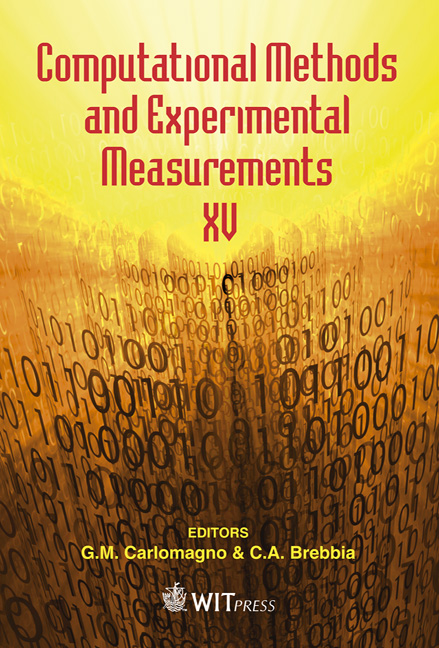On Liquid Crystal Thermography For Determination Of The Heat Transfer Coefficient In Rectangular Ducts
Price
Free (open access)
Transaction
Volume
51
Pages
12
Page Range
255 - 266
Published
2011
Size
597 kb
Paper DOI
10.2495/CMEM110231
Copyright
WIT Press
Author(s)
Z. Ghorbani-Tari, B. Sunden & G. Tanda
Abstract
Liquid crystal thermography (LCT) has been employed by researchers in heat transfer and fluid flow communities as a reliable and non-intrusive temperature measurement technique. This technique correlates the colour response to temperature for a heated surface which has been treated with thermochromic liquid crystals (TLCs). The LCT has been used extensively in convective heat transfer research in duct flows. In this paper, some experiences by LCT in thermal measurements for rectangular duct flows are provided. A few TLCs examples associated with continuous ribs for two different values of rib pitch-toheight ratio of 4 and 8 at Re=8900 and 28500 are illustrated. Important issues such as heating principles, calibration of TLCs, image acquiring and analysis, problems of treating the surface by TLCs, and expected measurement accuracy are summarized. The main purpose is to assist newcomers in the field and provide some guidelines for proper use of the LCT in heat transfer research. Keywords: LCT, convective heat transfer, measurement accuracy. 1 Introduction Liquid crystal thermography (LCT) has emerged as reliable measurement sensors for the visualization and determination of surface temperature distributions leading to convective heat transfer coefficients [1]. The advantages of LCT are, e.g., its flexibility to be used from micron sized electronic circuits to
Keywords
LCT, convective heat transfer, measurement accuracy





